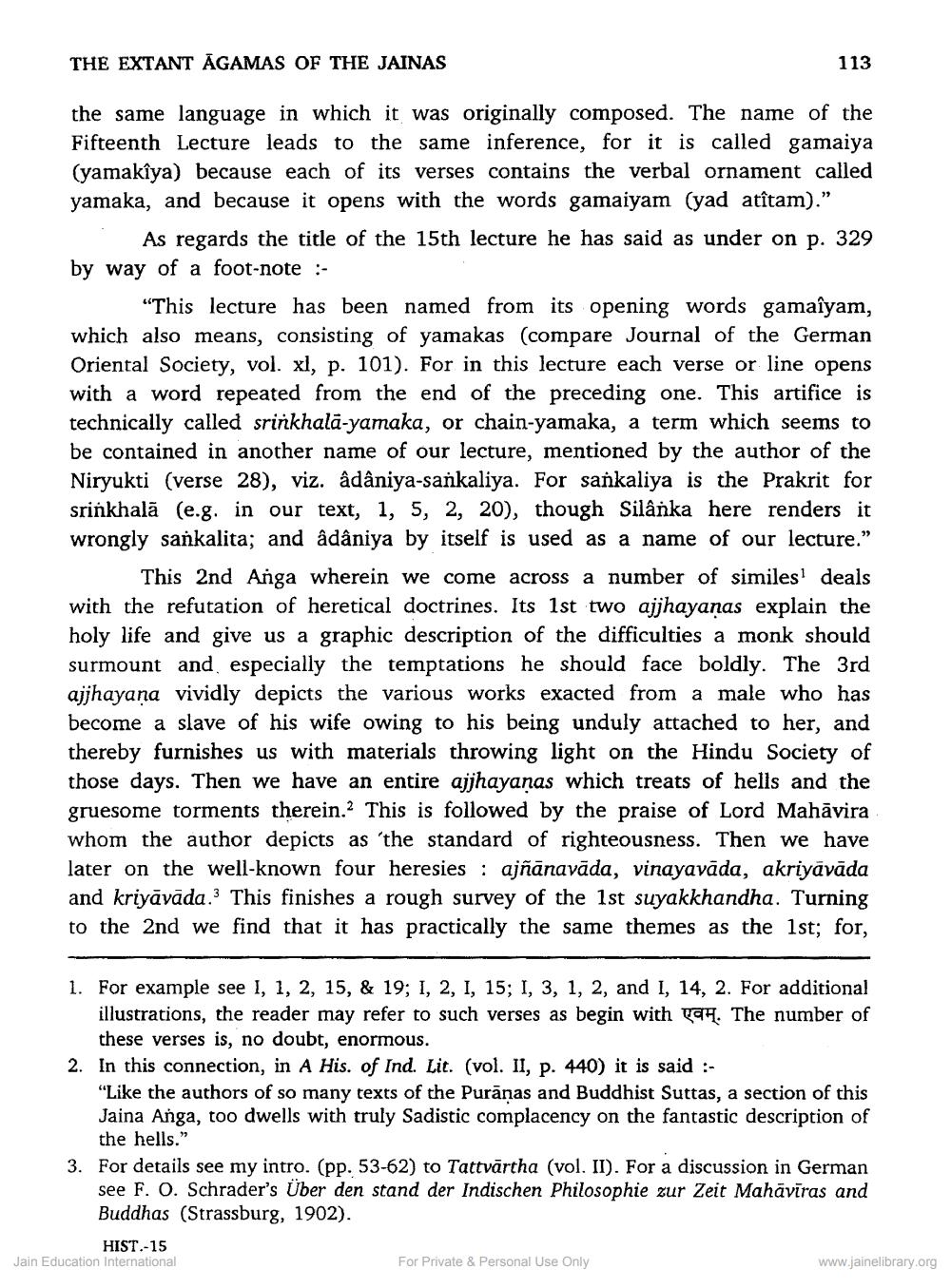________________
THE EXTANT ĀGAMAS OF THE JAINAS
113
the same language in which it was originally composed. The name of the Fifteenth Lecture leads to the same inference, for it is called gamaiya (yamakîya) because each of its verses contains the verbal ornament called yamaka, and because it opens with the words gamaiyam (yad atîtam).”
As regards the title of the 15th lecture he has said as under on p. 329 by way of a foot-note :
"This lecture has been named from its opening words gamasyam, which also means, consisting of yamakas (compare Journal of the German Oriental Society, vol. xl, p. 101). For in this lecture each verse or line opens with a word repeated from the end of the preceding one. This artifice is technically called srinkhalā-yamaka, or chain-yamaka, a term which seems to be contained in another name of our lecture, mentioned by the author of the Niryukti (verse 28), viz. âdâniya-sankaliya. For sankaliya is the Prakrit for srinkhalā (e.g. in our text, 1, 5, 2, 20), though Silânka here renders it wrongly sankalita; and âdâniya by itself is used as a name of our lecture.”
This 2nd Anga wherein we come across a number of similes' deals with the refutation of heretical doctrines. Its 1st two ajjhayanas explain the holy life and give us a graphic description of the difficulties a monk should surmount and especially the temptations he should face boldly. The 3rd ajjhayana vividly depicts the various works exacted from a male who has become a slave of his wife owing to his being unduly attached to her, and thereby furnishes us with materials throwing light on the Hindu Society of those days. Then we have an entire ajjhayanas which treats of hells and the gruesome torments therein. This is followed by the praise of Lord Mahāvira whom the author depicts as 'the standard of righteousness. Then we have later on the well-known four heresies : ajñānavāda, vinayavāda, akriyavāda and kriyāvāda. This finishes a rough survey of the 1st suyakkhandha. Turning to the 2nd we find that it has practically the same themes as the 1st; for,
1. For example see I, 1, 2, 15, & 19; I, 2, I, 15; I, 3, 1, 2, and I, 14, 2. For additional
illustrations, the reader may refer to such verses as begin with a7. The number of
these verses is, no doubt, enormous. 2. In this connection, in A His. of Ind. Lit. (vol. II, p. 440) it is said :
"Like the authors of so many texts of the Purānas and Buddhist Suttas, a section of this Jaina Anga, too dwells with truly Sadistic complacency on the fantastic description of
the hells." 3. For details see my intro. (pp. 53-62) to Tattvārtha (vol. II). For a discussion in German
see F. 0. Schrader's Über den stand der Indischen Philosophie zur Zeit Mahāvīras and Buddhas (Strassburg, 1902).
HIST.-15 Jain Education International For Private & Personal Use Only
www.jainelibrary.org




